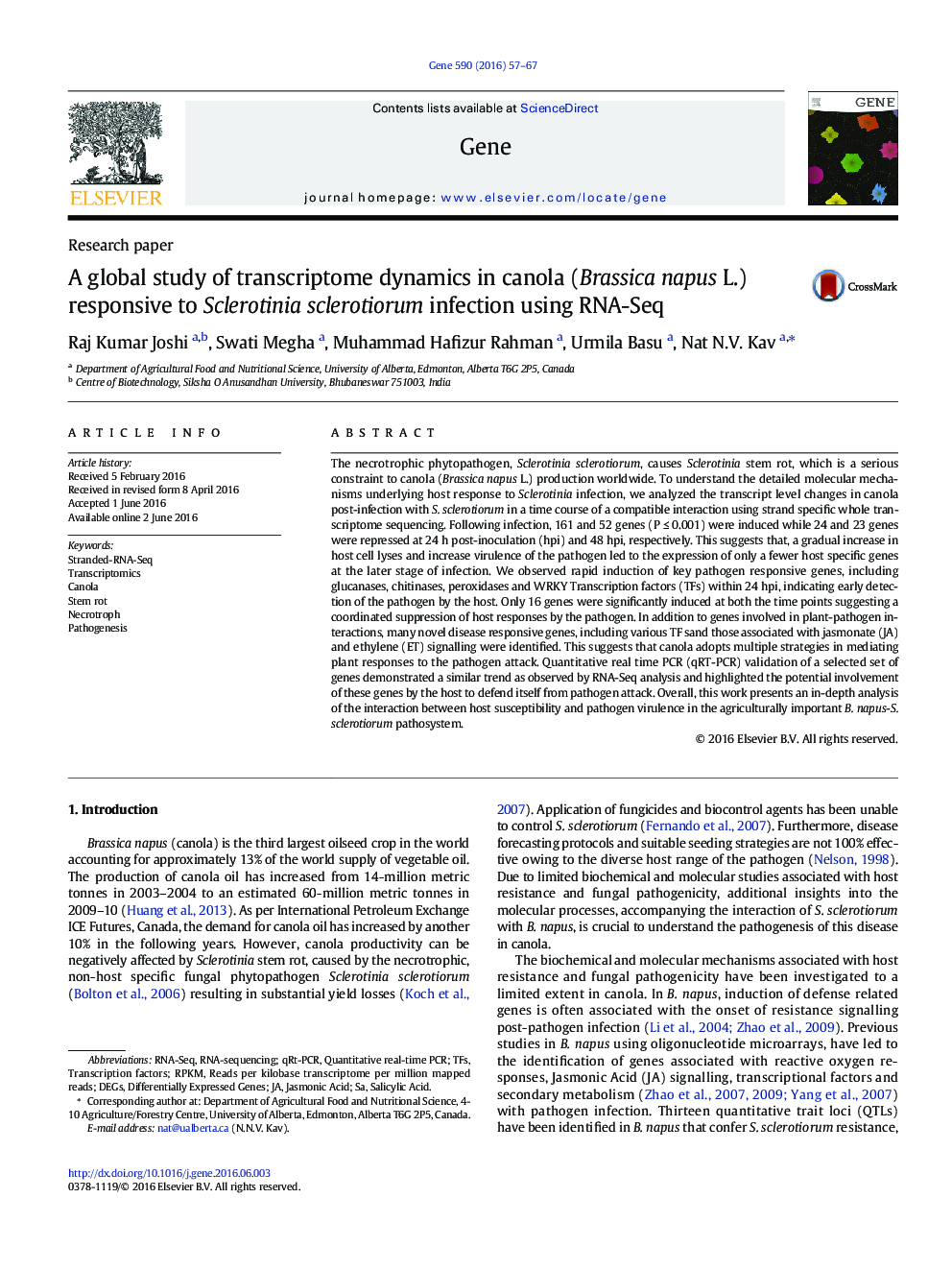| Article ID | Journal | Published Year | Pages | File Type |
|---|---|---|---|---|
| 2814872 | Gene | 2016 | 11 Pages |
•Transcriptomic profile of Brassica napus during a compatible interaction with S. sclerotiorum•Data provides insights into transcriptional networks and signalling modules.•Data suggests that canola employs multiple strategies against fungus.
The necrotrophic phytopathogen, Sclerotinia sclerotiorum, causes Sclerotinia stem rot, which is a serious constraint to canola (Brassica napus L.) production worldwide. To understand the detailed molecular mechanisms underlying host response to Sclerotinia infection, we analyzed the transcript level changes in canola post-infection with S. sclerotiorum in a time course of a compatible interaction using strand specific whole transcriptome sequencing. Following infection, 161 and 52 genes (P ≤ 0.001) were induced while 24 and 23 genes were repressed at 24 h post-inoculation (hpi) and 48 hpi, respectively. This suggests that, a gradual increase in host cell lyses and increase virulence of the pathogen led to the expression of only a fewer host specific genes at the later stage of infection. We observed rapid induction of key pathogen responsive genes, including glucanases, chitinases, peroxidases and WRKY Transcription factors (TFs) within 24 hpi, indicating early detection of the pathogen by the host. Only 16 genes were significantly induced at both the time points suggesting a coordinated suppression of host responses by the pathogen. In addition to genes involved in plant-pathogen interactions, many novel disease responsive genes, including various TF sand those associated with jasmonate (JA) and ethylene (ET) signalling were identified. This suggests that canola adopts multiple strategies in mediating plant responses to the pathogen attack. Quantitative real time PCR (qRT-PCR) validation of a selected set of genes demonstrated a similar trend as observed by RNA-Seq analysis and highlighted the potential involvement of these genes by the host to defend itself from pathogen attack. Overall, this work presents an in-depth analysis of the interaction between host susceptibility and pathogen virulence in the agriculturally important B. napus-S. sclerotiorum pathosystem.
